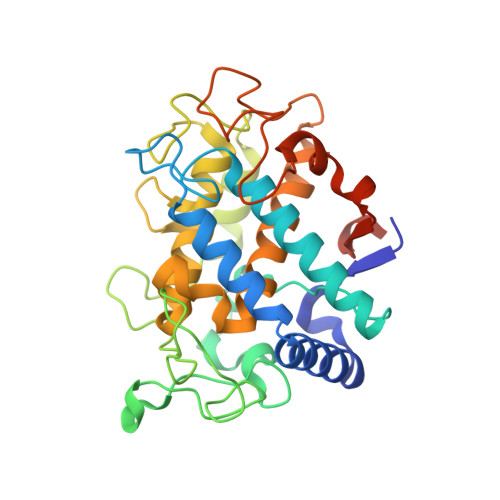Influencing the monophenolase/diphenolase activity ratio in tyrosinase.
Goldfeder, M., Kanteev, M., Adir, N., Fishman, A.(2013) Biochim Biophys Acta 1834: 629-633
- PubMed: 23305929
- DOI: https://doi.org/10.1016/j.bbapap.2012.12.021
- Primary Citation of Related Structures:
4HD4, 4HD6, 4HD7 - PubMed Abstract:
Tyrosinase is a type 3 copper enzyme with great potential for production of commercially valuable diphenols from monophenols. However, the use of tyrosinase is limited by its further oxidation of diphenols to quinones. We recently determined the structure of the Bacillus megaterium tyrosinase revealing a residue, V218, which we proposed to take part in positioning of substrates within the active site. In the structure of catechol oxidase from Ipomoea batatas, the lack of monophenolase activity was attributed to the presence of F261 near CuA. Consequently, we engineered two variants, V218F and V218G. V218F was expected to have a decreased monophenolase activity, due to the bulky residue extending into the active site. Surprisingly, both V218F and V218G exhibited a 9- and 4.4-fold higher monophenolase/diphenolase activity ratio, respectively. X-ray structures of variant V218F display a flexibility of the phenylalanine residue along with an adjacent histidine, which we propose to be the source of the change in activity ratio.
- Department of Biotechnology and Food Engineering, Technion-Israel Institute of Technology, Haifa 32000, Israel.
Organizational Affiliation:

















